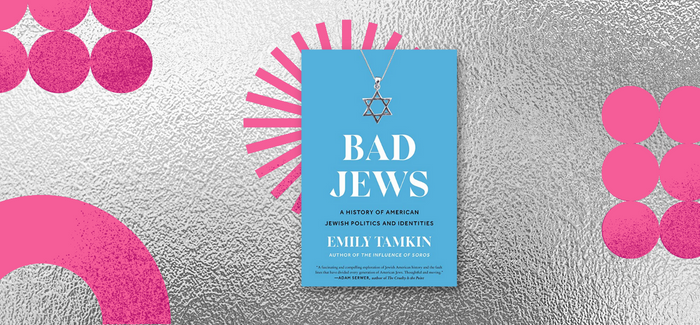Books
Non-fiction
Are ‘Bad Jews’ Real?
Bad Jews: A History of American Jewish Politics and Identities
By Emily Tamkin (Harper)
Maybe you’ve jokingly called yourself a “bad Jew” for not calling your mother or sleeping late instead of going to synagogue; maybe you’ve thought it about someone else, perhaps for their political positions, perceived moral failures or remarks about Israel. What it means to be an American Jew can often feel amorphous or uncertain, and today, with the rise of antisemitism, defining how one can be a “good” or “bad” Jew is even more fraught.
Intertwining history, politics and culture as well as interviews with activists, community leaders and others, journalist Emily Tamkin explores that binary—how different segments of the American Jewish community have vilified others around religion, social concerns, politics and Israel.
In her introduction, Tamkin, who punctuates the book with personal anecdotes, questions whether she herself is the “right kind of Jew” for this sort of exploration. She has little formal Jewish education, never had a bat mitzvah and never visited Israel before researching this book. A member of a Reform congregation, she is determined to create a Jewish household despite noting that her marriage to someone non-Jewish might make her the titular “bad Jew” in the eyes of at least some of the Jewish establishment.
Yet in working on Bad Jews, she writes, “I realized this, too: No one person is an authority on being an American Jew.”
Still, she emphasizes certain unsurprising and well-known truths about American Jewry: That the topic of identity is the source of endless disagreement, debate and discourse, and “As a monolithic or hegemonic entity, the Jewish community does not exist.”
Tracing Jewish acculturation and assimilation through different moments in the past century—civil rights efforts, the labor movement, the Cold War and today’s left-right political divide—Tamkin touches on how “dominating narratives about what it means to be Jewish in America” left imprints on what we consider appropriate or inappropriate behaviors.
“But,” she writes, “they are just that: narratives, and counternarratives, and counternarratives to the counternarratives. Stories we tell ourselves.”
Chapter titles—“Foreign Jews,” “Zionist Jews,” “Right-Wing Jews,” “Laboring Jews,” “Refugee Jews”—illustrate the broad swathe of Tamkin’s exploration of Jewishness. She also discusses Jewish proximity to whiteness and how this has changed over time, partly due to outside perceptions and social factors—a complex topic she returns to in different chapters.
Then there is Israel, often used today as a sort of litmus test for whether one is a “bad Jew” by a certain segment of the Jewish population. Tamkin examines the impact of the creation of Israel and its subsequent battles for survival and how the relationship of American Jews to the Jewish state has changed overtime. (Interestingly, she also asks Israelis how they feel about that changing relationship.) She interviews Jews who claim an array of views on Israel, from those who are unquestioningly loyal to the country to those for whom Israel is not so important to those who identify as Zionist but reserve the right to criticize Israeli policies. This last group includes Jeremy Ben-Ami, founder of the progressive advocacy group J Street, and Dov Lipman, an American-born oleh and former member of Knesset and political correspondent, who runs a program to help young people make aliyah. The author discusses both of these figures at length.
At a time when questions around American Jewish identity are so divisive, this book is an exploration, albeit an abridged one, of the factors that have helped shape how we see ourselves within the larger social, religious and political context of the last several decades.
As Tamkin writes, “I would argue that the fact that we are in a time of change and conflict and challenge has thrown many American Jews off balance. Things are not as they were. But that, in turn, means there is an opportunity to think about what things could be.”
Jaime Herndon is a writer and avid reader. Her work can be found at Book Riot, Undark, Kveller, Motherly and other places.











 Facebook
Facebook Instagram
Instagram Twitter
Twitter
Leave a Reply